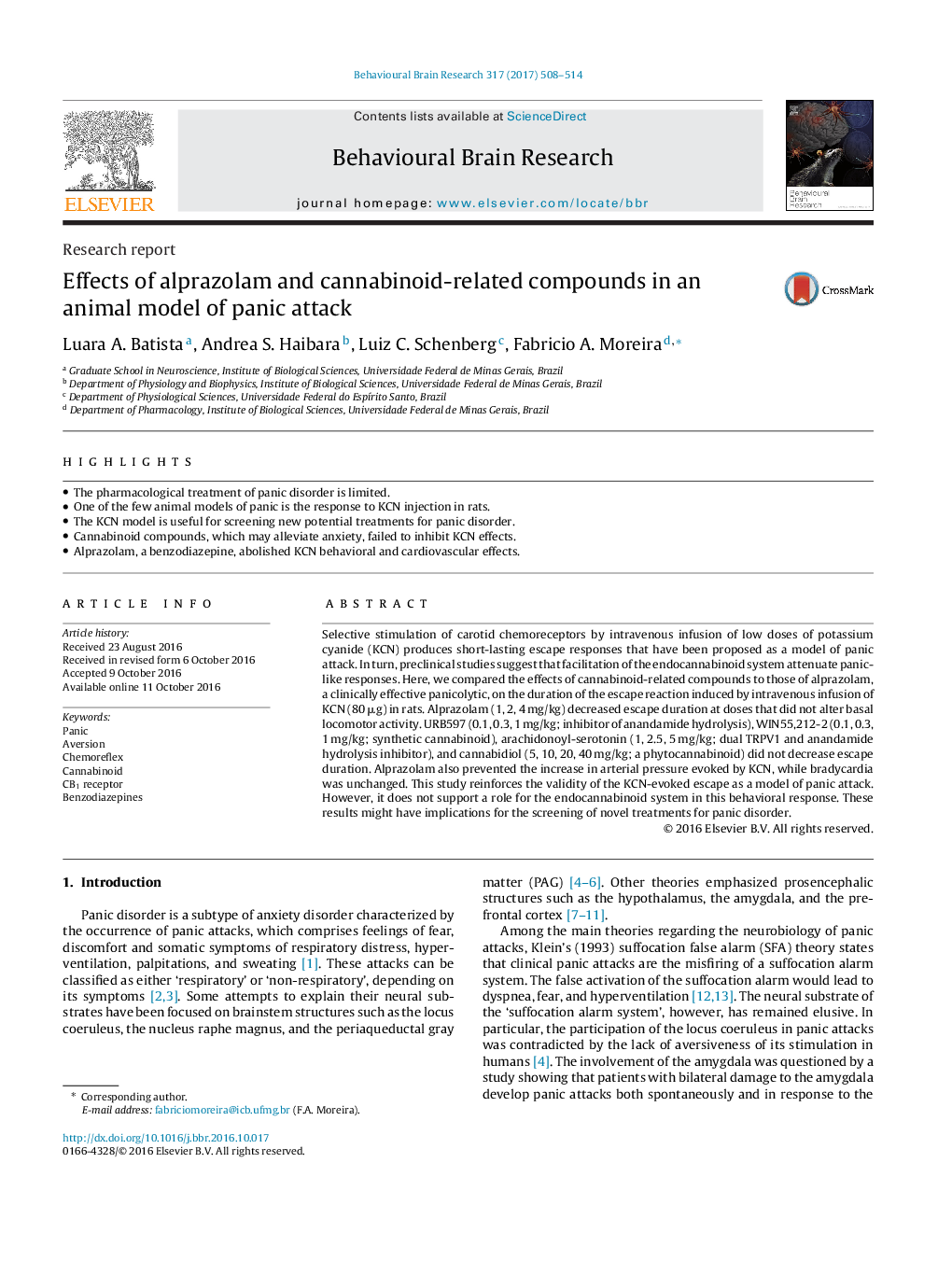| کد مقاله | کد نشریه | سال انتشار | مقاله انگلیسی | نسخه تمام متن |
|---|---|---|---|---|
| 8838013 | 1612916 | 2017 | 7 صفحه PDF | دانلود رایگان |
عنوان انگلیسی مقاله ISI
Effects of alprazolam and cannabinoid-related compounds in an animal model of panic attack
ترجمه فارسی عنوان
اثرات ترکیبات آلپرازولام و کانابینوئید در یک مدل حیوانی از حمله هراس
دانلود مقاله + سفارش ترجمه
دانلود مقاله ISI انگلیسی
رایگان برای ایرانیان
کلمات کلیدی
موضوعات مرتبط
علوم زیستی و بیوفناوری
علم عصب شناسی
علوم اعصاب رفتاری
چکیده انگلیسی
Selective stimulation of carotid chemoreceptors by intravenous infusion of low doses of potassium cyanide (KCN) produces short-lasting escape responses that have been proposed as a model of panic attack. In turn, preclinical studies suggest that facilitation of the endocannabinoid system attenuate panic-like responses. Here, we compared the effects of cannabinoid-related compounds to those of alprazolam, a clinically effective panicolytic, on the duration of the escape reaction induced by intravenous infusion of KCN (80 μg) in rats. Alprazolam (1, 2, 4 mg/kg) decreased escape duration at doses that did not alter basal locomotor activity. URB597 (0.1, 0.3, 1 mg/kg; inhibitor of anandamide hydrolysis), WIN55,212-2 (0.1, 0.3, 1 mg/kg; synthetic cannabinoid), arachidonoyl-serotonin (1, 2.5, 5 mg/kg; dual TRPV1 and anandamide hydrolysis inhibitor), and cannabidiol (5, 10, 20, 40 mg/kg; a phytocannabinoid) did not decrease escape duration. Alprazolam also prevented the increase in arterial pressure evoked by KCN, while bradycardia was unchanged. This study reinforces the validity of the KCN-evoked escape as a model of panic attack. However, it does not support a role for the endocannabinoid system in this behavioral response. These results might have implications for the screening of novel treatments for panic disorder.
ناشر
Database: Elsevier - ScienceDirect (ساینس دایرکت)
Journal: Behavioural Brain Research - Volume 317, 15 January 2017, Pages 508-514
Journal: Behavioural Brain Research - Volume 317, 15 January 2017, Pages 508-514
نویسندگان
Luara A. Batista, Andrea S. Haibara, Luiz C. Schenberg, Fabricio A. Moreira,
